Advertisement
Review
Botticelli Spun Masterful Scenes Of Historical Complexity
Even before she had a museum, Isabella Stewart Gardner had a Botticelli — the first painting by the late 15th-century Italian artist to enter this country.
It wasn’t one of the ravishing masterpieces casual art lovers are familiar with: “Primavera” or “The Birth of Venus” — those magnificent large-scale paintings that lure thousands of visitors to the Uffizi Gallery in Florence. It was instead a grim and morally charged painting on a “classical” theme, “The Tragedy of Lucretia.”

The painting is difficult and has always been hard to get close to hanging over a nuptial chest in the Gardner’s Raphael Room (Mrs. Gardner also brought the first Raphael to America). And it’s less seductive than the exquisite Botticelli, “Madonna and Child with an Angel,” hanging upstairs. It tells the story — retold by Shakespeare, painted by Titian and Rembrandt, set to music by Benjamin Britten — of the Roman noblewoman who is raped at knife-point by the Etruscan prince Tarquinius Sextus and then commits suicide to restore her honor. Public outrage over her death triggers a rebellion led by Brutus, who is the central figure in the painting, that replaces the Roman kingdom with a republic.
"The Tragedy of Lucretia," less than 3-feet by 6-feet, is a "spalliera" painting — a new kind of painting for the mid-1400s, often mythological or allegorical in subject, that was hung on a shoulder-height wall panel in the homes of wealthy or noble patrons. ("Spalla" is the Italian word for shoulder.)
A new exhibit in the Gardner Museum's Hostetter Gallery (in the new wing), "Botticelli: Heroines + Heroes" may very well be the first serious exhibition of "spalliere" in this country. Put together by Dr. Nathaniel Silver, the Gardner Museum’s William and Lia Poorvu curator of the collection, the exhibit reunites the Gardner's "Tragedy of Lucretia" with its slightly smaller companion painting, "The Story of Virginia" (from Accademia Carrara in Bergamo, Italy) for only the second time since they were originally purchased together in 1500 by the Vespucci family. (The two paintings first reunited at the Accademia Carrara a couple of months ago for an exhibition before traveling to Boston.)
It's also "The Story of Virginia's" first visit to the U.S.
Advertisement
The story of Virginia might even be darker than the story of Lucretia. Virginia is a young woman abducted by a corrupt judge who claims she is his slave. No one is able to rescue her, and her father would rather kill her than see her violated — and does. This is another etiological story about the founding of the Roman republic, and both Lucretia and Virginia had heavy symbolic meaning for the city of Florence, which was just liberating itself from Medici rule.
The two paintings make a striking pair — two historical paintings on similar subjects in “wide screen” and glorious Technicolor. On the top of a column rising above the body of Lucretia is a monumental statue of David, with the head of Goliath at his feet. Take that, tyrants!
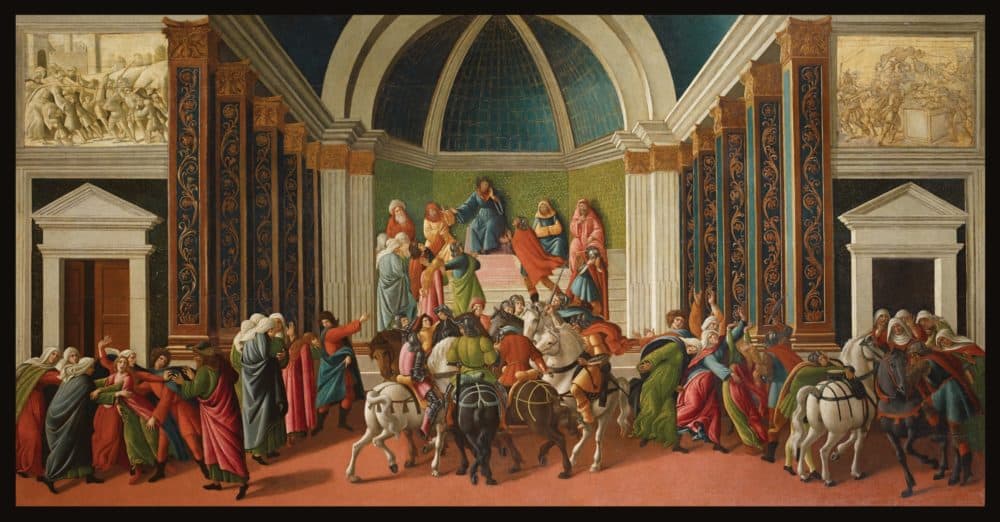
Lucretia and Virginia are joined by four other Botticelli "spalliere": Two paintings from the National Gallery in London and one from the Metropolitan Museum in New York depict the life and miracles of the fourth century Saint Zenobius, the first bishop of Florence (the art museum in Dresden owns a fourth Zenobius painting but wouldn’t lend it), and there’s an unfinished “Adoration of the Magi” from the Uffizi, which Silver says might be Botticelli’s very last painting. There are also two extraordinary Botticelli drawings of details from an “Adoration of the Magi” painting. All of these works are dated “around 1500.” (Botticelli died in 1510, so much under the influence of the radical book-burning and art-destroying Dominican monk Savanarola that he changed his style of painting.) The Hostetter Gallery has been turned into a kind of chapel to facilitate the viewing of these paintings and provide a kind of meditative ambience.
One of the most interesting elements of most of these paintings is that each panel depicts not one, but a series of events. Not just the rape of Lucretia, but also her suicide and the public display of her dead body, with Brutus rising over it. The Virginia panel has a sequence of seven consecutive events.
Botticelli places the action(s) in a vivid architectural “mise-en-scène,” sometimes combining contemporary Florence with ancient Rome, and some of these paintings have a powerfully unified overall structure.
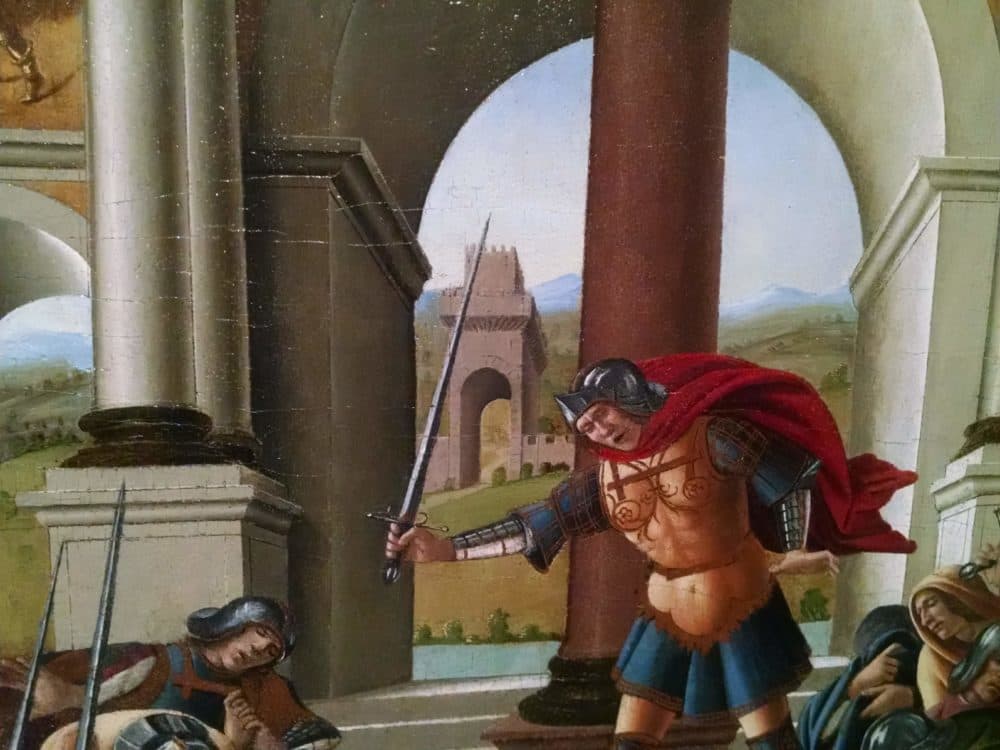
But one of the implications of this telescoping of events is that some of the small details are really more captivating than the bigger picture. For example, look at these weird little devils Zenobius is exorcising from two possessed young men:
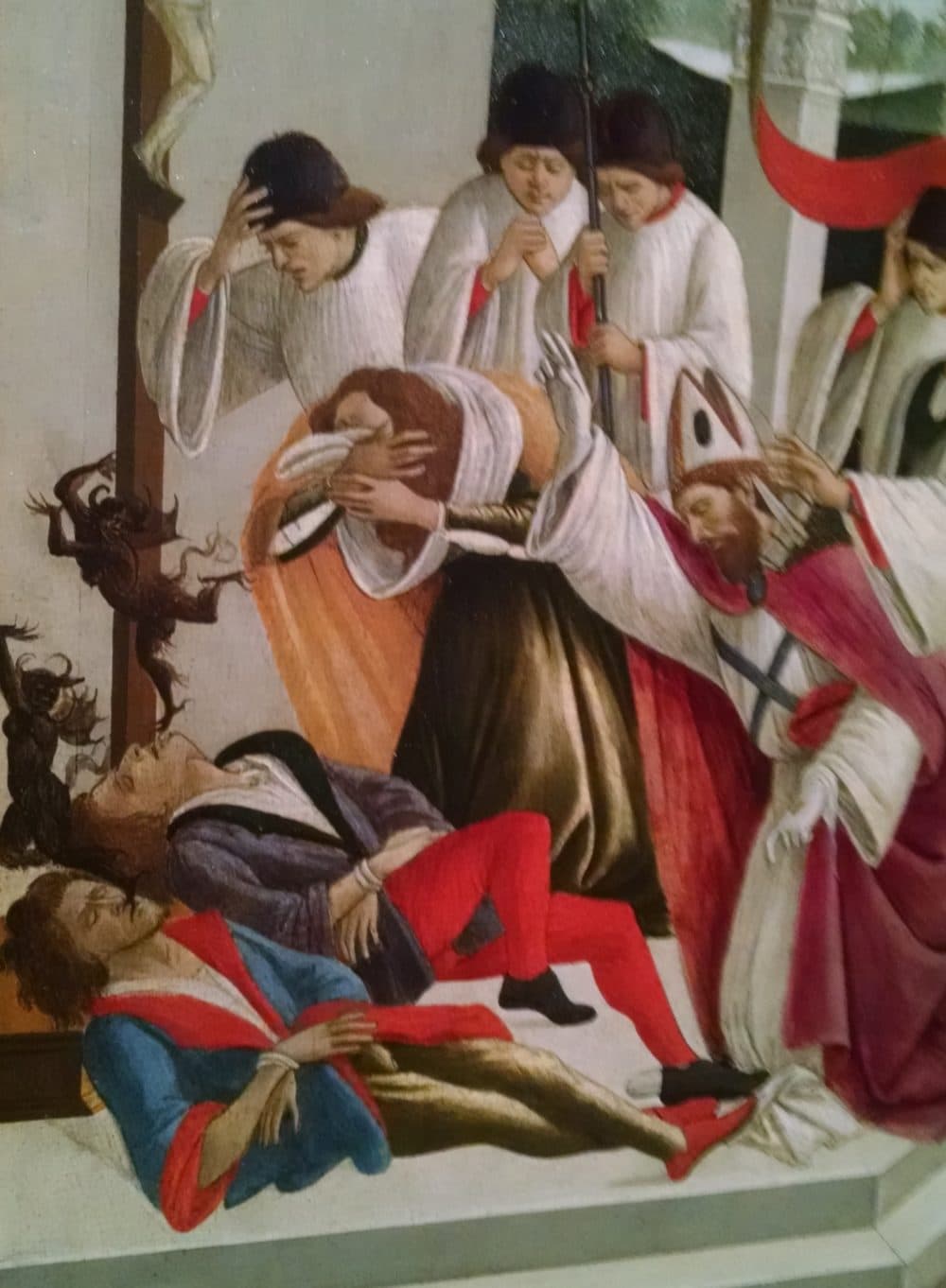
Or the exuberant steeds in the Virginia painting:
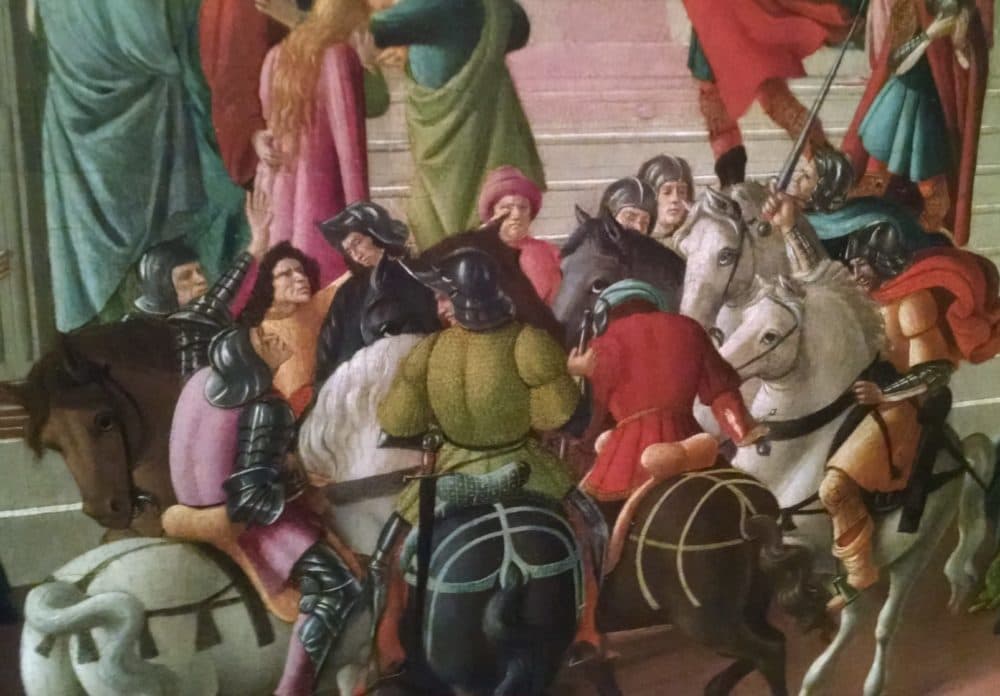
Or the frieze above Lucretia’s doorway as she is trying to fend off her rapist that shows Judith carrying the severed head of Holofernes, another triumph for a woman over male domination:
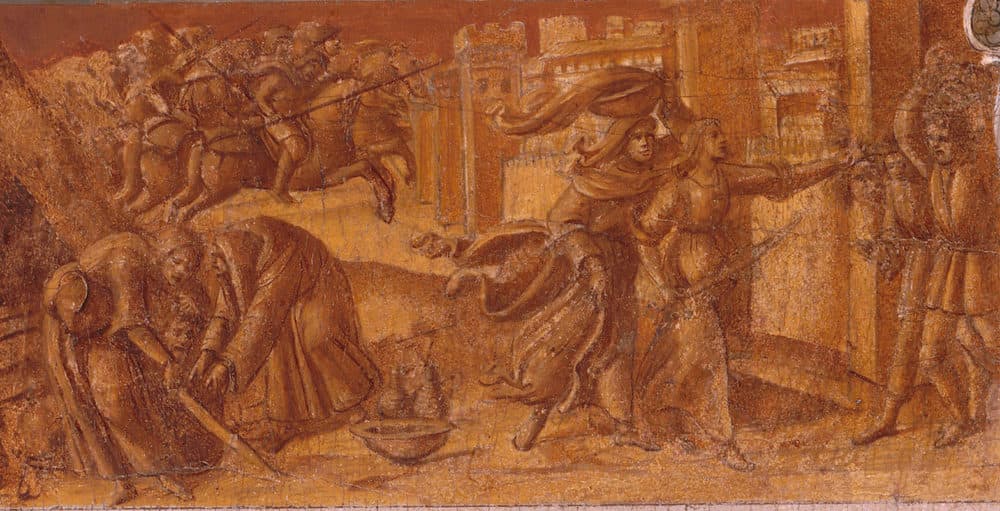
(In it, Botticelli repeats a memorable image from his own dazzling painting of Judith and Holofernes.)
Something else these paintings with their multiple activities suggest is the modern cartoon, with its sequence of frames. That may have given Silver the idea of commissioning new work for the exhibit from the Boston cartoonist and graphic novelist Karl Stevens. (You might recognize his work in the Boston Phoenix and The New Yorker.) His cartoons appear alongside the intelligent wall captions.
My favorite is the sequence telling the story of Mrs. Gardner acquiring her first Botticelli, advised by art historian Bernard Berenson (whom she here calls “Bernie”). Stevens also supplies picturesque settings of the Tuscan landscape where some of the Botticellis take place. When I first heard about this project, I was afraid it might just be a gimmick to attract a younger audience, or an audience less confident about the art itself. But at the very least it does no harm, and at best it’s a witty counterpoint to a remarkable and demanding exhibit that puts Mrs. Gardner’s often bypassed first Botticelli in an illuminating new context.
“Botticelli: Heroines + Heroes” will be on display at the Isabella Stewart Gardner Museum through May 19.
Correction: An earlier version of this story incorrectly stated "The Tragedy of Lucretia" and "The Story of Virginia" reunited in Boston first. They reunited in Italy first last year, before coming to Boston. The story has been updated.
This article was originally published on February 13, 2019.
